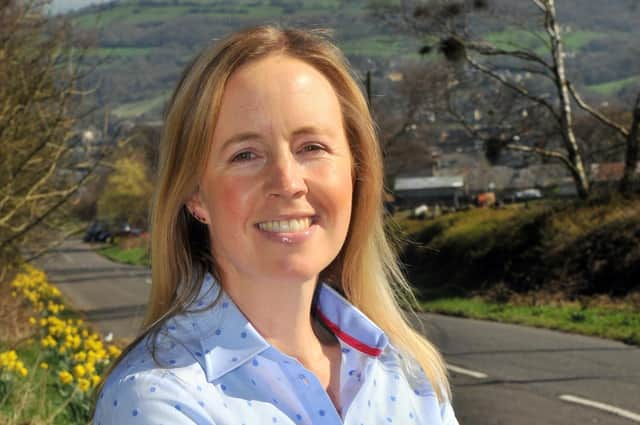Short eared owls are absent for the bird survey but make an appearance for photographer John William at the farm on the M62


The heather and bilberry bushes will soon come to life. I love watching the ever-changing moods of the moors, the hushed, dormant browns of the molinia and patches of bracken being replaced by emerald greens and white candy floss cotton grass before the autumnal swathes of purple and soft lilacs cover the slopes.
The birds come and go, feeding, nesting, rearing and filling the skies with their eternal chitter chatter. We watch them intently, always glad at their return, hopeful for a successful breeding season.
Advertisement
Hide AdAdvertisement
Hide AdMy years at Stott Hall Farm have opened up my eyes to these amazing, resilient creatures, so varied in their appearance, personalities and mannerisms.
Lambing time gives us a unique glimpse into their world, our constant monitoring of the sheep allows us to watch them on a daily basis. Sadly, our numbers are down this year. The oystercatchers are noticeable in their absence with only two pairs nesting next to the reservoir.
A very dry spring has kept the waders away as have the soaring numbers of Wild Canada geese. The fields, usually filled with lapwings have only a handful, the curlew also noticeably less.
With so few numbers we’d been keeping a close eye on a pair of oystercatchers that had laid their eggs in some rocks only a few feet away from the water’s edge.
Advertisement
Hide AdAdvertisement
Hide AdThe eggs were brilliantly camouflaged, but sadly not enough to keep them safe from predation. The badger came one night and the eggs disappeared. The three curlew nests also suffered the same fate, a terrible blow for this fast dwindling species.
The first part of a professional bird survey was carried out last week at the farm.
As part of Yorkshire Water’s ‘Beyond Nature’ initiative and our passion for wildlife, the survey was organised so we could start to monitor the different species, how their numbers are faring and, of course, look at habitat improvement.
The weather wasn’t kind for the first couple of days of recording, with dense fog and drizzle. Hopeful to see our short-eared owls, the surveyors had hung around as late as possible but the weather wouldn’t let up and the owls never made an appearance.
Advertisement
Hide AdAdvertisement
Hide AdThe weather blew out the following day and the blue skies and sunshine returned. As John-William and I drove home down Deanhead, we spotted one of our owls hunting on the edge of the moor.
I pulled over and we sat and watched as it skimmed across the tops. It turned and headed in our direction, settling on a fence post right next to our car.
John-William looked at me, open mouthed, eyes wide in amazement. Without uttering a word he lifted the camera and captured the bird just as it turned to look at us. He lowered the camera and for the briefest of moments their eyes met and time stood still.